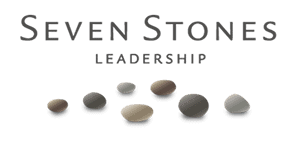Transition is the way we come to terms with change, the process of ways of being and behaviors that move us forward in our lives from the time before the change to the time after, like a bridge. Generally speaking, any transition has a beginning, middle and end, though we start with an ending, and end with a beginning. In the middle is the neutral zone, the gap between our life before the change and our life after the change, and it can be a time when we often feel disorientated, disillusioned and perhaps lost – the future is unclear and we feel uncertain.
The neutral zone, or gap between the old way and the new way, is also a very fertile time for creativity. We can see that in current events: as the economic crisis ensues, there is an acceleration of renewable energy industries and awareness programs about consumption practices. We may see it in ourselves, perhaps in a slowing down, an evaluation of our lives and work. And, like an artist looking at an awaiting canvas, or a writer at a blank screen, transitions can be confronting. They require relinquishing our expectations, trusting in ourselves, perhaps beyond what we have done before, and accepting a new status quo.
As you can imagine, it could be easy to bail from the transition process and instead look to make a new change!
I know all about that. For a long time I thought, “I am always in transition,” and believed I was even good at it. But I was really someone who was addicted to change, never quite going all the way through the process of transition, or crossing the bridge all the way so to say. For example, some change would happen, the process of transition would start, I would get uncomfortable and seek out a new change to interrupt the process of transition. I was a serial change artist.
Relationships were like this for me, so you may imagine that marriage was a brutal transition. When I finally stayed in one, I went through the somewhat challenging and at times excruciating process of transitioning to a wife in a committed partnership that had vows and a shared house and resources. Though it was what I said I wanted, it was painful to give up the parts of myself I enjoyed from being single. It took me considering my fear of commitment, of settling down and letting go of all the things I would not be able to do if I said I was going to be married and be in a family.
Having been married five years this week, I can now claim to have made it through the initiation of marriage (though of course it continues to be a process, a challenge and a joy). In this way, for me, I have begun to experience one of transition’s greatest gifts, the opportunity for personal growth. Its power is that it is an opportunity to learn about ourselves and others, to see reality more clearly, and to become more a more authentic presence. The act of letting go and the process of acceptance are in many ways spiritual actions, and they can bring us to a new place of understanding the world. Transition can help heal us, make peace with past wounds, and focus on our passions.
Making a conscious transition is an act of sufficiency. Transition is inherently an act of trusting, of allowing, of creativity. Transition is about flow. The Tools of Sufficiency can further our awareness of making transitions through the art of easeful action, honoring ourselves and others, listening to our inner voice and being grateful for what is, especially when times feel so uncertain.
Consider what transitions you are in right now. It’s helpful to first identify the change that happened. Then, ask yourself what expectations you have about the change, the before and the after. What feelings do you have about those expectations? What behaviors and ways of being do you notice in yourself? Then, go further and ask: What nurtures you when you are crossing the bridge?



